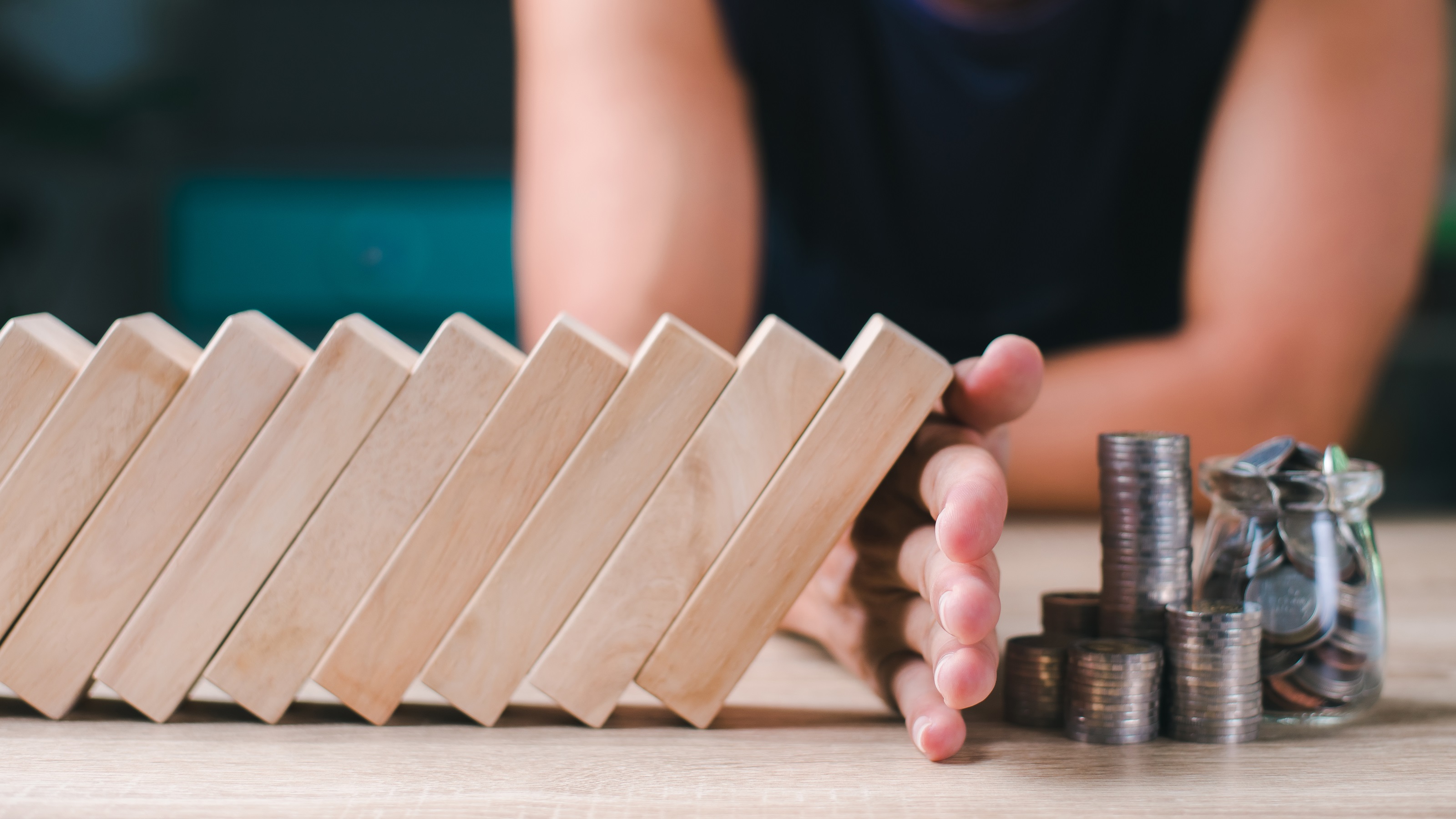Protect Your Wealth Against Inflation in Three Easy Steps
Inflation might have fallen off the list of concerns for many investors, but history suggests that failing to protect against it could be hazardous to your wealth.


Inflation fears are out of fashion within the investor community. They’re far more interested in recession spotting and next year’s presidential election.
After all, the core Personal Consumption Expenditures (PCE) Index, the Federal Reserve’s preferred measure of inflation, has declined steadily over the past 12 months. “Core” simply means that food and energy prices are stripped out of the index because they tend to be volatile in the short term and can be driven by environmental issues or geopolitics.

Great news, right?
From just $107.88 $24.99 for Kiplinger Personal Finance
Become a smarter, better informed investor. Subscribe from just $107.88 $24.99, plus get up to 4 Special Issues

Sign up for Kiplinger’s Free Newsletters
Profit and prosper with the best of expert advice on investing, taxes, retirement, personal finance and more - straight to your e-mail.
Profit and prosper with the best of expert advice - straight to your e-mail.
While I’d certainly rather see inflation rates declining rather than accelerating, such charts can be misleading. Ultimately, we’re still talking about inflation growth (just a slowing rate of that growth). Inflation is commonly reported by comparing the rate of inflation growth against the previous year. While the chart above demonstrates that the rate of inflation is declining, there is still inflation! Prices are still going up. Goods and services still cost more. Inflation is still chipping away at the purchasing power of your dollars.
Here is another way to think about inflation. We’re looking at the same core PCE price index from the first chart. But rather than comparing year-over-year growth, we’re simply looking at how the index has behaved over the past 60 years.

You’ll be hard-pressed to find a period when the United States had deflation. That’s because in 60 years, it hasn’t happened. To be fair, the “headline” PCE, which includes food and energy prices, did have a modestly deflationary period in 2009 after the Great Financial Crisis.
Regardless of how you choose to measure inflation, it is ubiquitous in our modern economy. Sometimes you feel it. Sometimes it is more stealthy. But it is always eroding your purchasing power by degrading the value of your hard-earned dollars over time.
When we think about wealth preservation, it would be shortsighted to simply consider present circumstances. If we look just beyond our horizon to the near future, there is a very real possibility that inflation rates pick back up. Several factors, including spending on decarbonization, reshoring manufacturing, increased military spending and a shortage of labor can all pressure prices upward.
Maybe we will experience another spike in inflation. Or perhaps inflation goes unnoticed with low-single-digit growth over a prolonged period — the proverbial boiling frog scenario.
What we do know is clear: Inflation is not going away. Your choice is how you let it impact your wealth. You can let it ravage your savings, or you can protect your portfolio and retirement with these three simple steps:
Step 1: Avoid excess cash.
By definition, inflation is an increase in the price of goods and services. The more inflation there is, the less your cash can buy. That is to say, the purchasing power of the currency is reduced. We know that inflation has been a constant force for several decades. The chart below is a different way to think about the impact of inflation over the years. It may hit close to home.

The purchasing power of the U.S. dollar has steadily decreased over the last century. That’s what inflation does to fiat currencies like the dollar over time. The solution here is pretty simple. Beyond having some cash on hand to meet expenses, get through an emergency or as dry powder for some opportunistic investing, you should avoid having excessive amounts of cash as part of your long-term strategy. Having dollars stuffed under a mattress or locked up in a safe or bank vault is not an effective way to beat inflation.
Step 2: Own things that hurt if you drop them on your foot.
OK, there are exceptions. I don’t recommend filling your home with refrigerators or bowling balls. But the point is to own real assets. Real estate is a typical example of this strategy. However, with residential real estate affordability near a 40-year low and the office space struggling, I’m less enthused with the sector beyond a few niche areas.
Thankfully, there are other options. I’ve already professed my love for pipelines, in my article These Energy ‘Middlemen’ Are an Income Lover’s Dream. The midstream companies that own them have already spent big bucks to build out their infrastructure. Inflation should increase the value of these assets as they become increasingly more expensive to replace.
Gold is another way to protect yourself from the wealth-eroding powers of inflation. There are several different ways to invest. You might choose to own the physical metal, big gold mining companies, junior miners or gold royalty companies. They all perform differently depending on the environment. That’s why my firm, SAM, has multiple strategies with a gold weighting component.
But no matter how you choose to get your gold exposure, its track record as a store of value over thousands of years means the odds of maintaining your purchasing power in the face of inflation are in your favor.
Step 3: Invest in companies with pricing power.
Take another look at that Purchasing Power of $1 chart. While it’s jarring, the decline of value in the dollar didn’t lead to economic devastation. As you may have heard, the U.S. economy has actually grown quite a bit since 1913. Now, if you parked cash in the bank earning nominal interest rates during much of this time period, you wouldn’t be thrilled with your returns.
If you bought gold, you at least likely maintained your purchasing power. But when it comes to staying ahead of inflation, I’d urge you to consider stocks. Not just any stocks — stocks with pricing power.
Pricing power refers to a company’s ability to raise prices and maintain profit margins without losing market share. In other words, they can pass rising costs on to consumers.
The reasons a company has pricing power vary widely. They may have strong brand loyalty. They may have a monopoly on a vital product like a life-extending medication. Some businesses like the previously mentioned pipeline companies have inflation escalator clauses built right into their contracts. Whatever the reason, these are companies we want to own in an environment where inflation remains pervasive and stubborn.
Pricing power is, well, powerful. A recent study by Steve Hou, PhD, showed that stocks with pricing power consistently outperformed the stock market — not just during inflationary periods, but over long-term periods as well. Hou called companies with pricing power “quiet quality compounders.” They tend to be high-quality, lower-risk companies that compound returns steadily over time.
Inflation isn’t going anywhere. Certainly, the rate of inflation may speed up or slow down with market factors, but it’s still the standard operating environment. By limiting your cash holdings, investing in value-preserving commodities like gold and investing in companies with pricing power that can more easily navigate robust inflationary periods, you can be a better steward of your wealth and protect it from inflation. That’s a recipe for success, no matter what the future holds in store.
To learn more about how SAM works with its clients to understand the impact of inflation on their cash flow needs and their financial planning goals, please go to www.stansberryam.com.
Related Content
- Kiplinger Inflation Outlook: Inflation Reduction Still on Track for 2024
- Rising Prices: Which Goods and Services Are Driving Inflation?
- Retirement Planning in a Time of Inflation and High Interest Rates
- Inflation and Retirement: Five Ways to Soothe Your Worries
- How Inflation Hurts Retirees
Profit and prosper with the best of Kiplinger's advice on investing, taxes, retirement, personal finance and much more. Delivered daily. Enter your email in the box and click Sign Me Up.

Michael is a Portfolio Manager and Deputy Chief Investment Officer at SAM, a Registered Investment Advisor with the United States Securities and Exchange Commission. File number: 801-107061. He sources investment opportunities and conducts ongoing due diligence across SAM’s portfolios. Michael co-manages SAM’s Income and Tactical Select strategies. Prior to joining SAM, Michael worked with high-net-worth private clients for the largest independent wealth management firm in the United States. He was also a senior analyst for one of the largest investment-grade bond managers in America. Michael joined SAM in 2017.
-
 IRS Says You Made a Tax Return Mistake? A New Law Could Help You Fight Back
IRS Says You Made a Tax Return Mistake? A New Law Could Help You Fight BackTax Law Updated taxpayer protections change what the IRS must explain on error notices and how long you have to respond.
-
 What to expect from the global economy in 2026
What to expect from the global economy in 2026The Kiplinger Letter Economic growth across the globe will be highly uneven, with some major economies accelerating while others hit the brakes.
-
 What You Need to Do With Your 401(k) Before 2025 Is Over
What You Need to Do With Your 401(k) Before 2025 Is OverBefore 2025 ends, check your 401(k) contributions, investments, and catch-up eligibility to lock in this year’s tax savings and employer match.
-
 I'm a Tax Attorney: These Are the Year-End Tax Moves You Can't Afford to Miss
I'm a Tax Attorney: These Are the Year-End Tax Moves You Can't Afford to MissDon't miss out on this prime time to maximize contributions to your retirement accounts, do Roth conversions and capture investment gains.
-
 I'm an Investment Adviser: This Is the Tax Diversification Strategy You Need for Your Retirement Income
I'm an Investment Adviser: This Is the Tax Diversification Strategy You Need for Your Retirement IncomeSpreading savings across three "tax buckets" — pretax, Roth and taxable — can help give retirees the flexibility to control when and how much taxes they pay.
-
 Could an Annuity Be Your Retirement Safety Net? 4 Key Considerations
Could an Annuity Be Your Retirement Safety Net? 4 Key ConsiderationsMore people are considering annuities to achieve tax-deferred growth and guaranteed income, but deciding if they are right for you depends on these key factors.
-
 I'm a Financial Pro: Older Taxpayers Really Won't Want to Miss Out on This Hefty (Temporary) Tax Break
I'm a Financial Pro: Older Taxpayers Really Won't Want to Miss Out on This Hefty (Temporary) Tax BreakIf you're age 65 or older, you can claim a "bonus" tax deduction of up to $6,000 through 2028 that can be stacked on top of other deductions.
-
 Meet the World's Unluckiest — Not to Mention Entitled — Porch Pirate
Meet the World's Unluckiest — Not to Mention Entitled — Porch PirateThis teen swiped a booby-trapped package that showered him with glitter, and then he hurt his wrist while fleeing. This is why no lawyer will represent him.
-
 Smart Business: How Community Engagement Can Help Fuel Growth
Smart Business: How Community Engagement Can Help Fuel GrowthAs a financial professional, you can strengthen your brand while making a difference in your community. See how these pros turned community spirit into growth.
-
 In 2026, the Human Touch Will Be the Differentiator for Financial Advisers
In 2026, the Human Touch Will Be the Differentiator for Financial AdvisersAdvisers who leverage innovative technology to streamline tasks and combat a talent shortage can then prioritize the irreplaceable human touch and empathy.
-
 How Financial Advisers Can Deliver a True Family Office Experience
How Financial Advisers Can Deliver a True Family Office ExperienceThe family office model is no longer just for the ultra-wealthy. Advisory firms will need to ensure they have the talent and the tech to serve their clients.